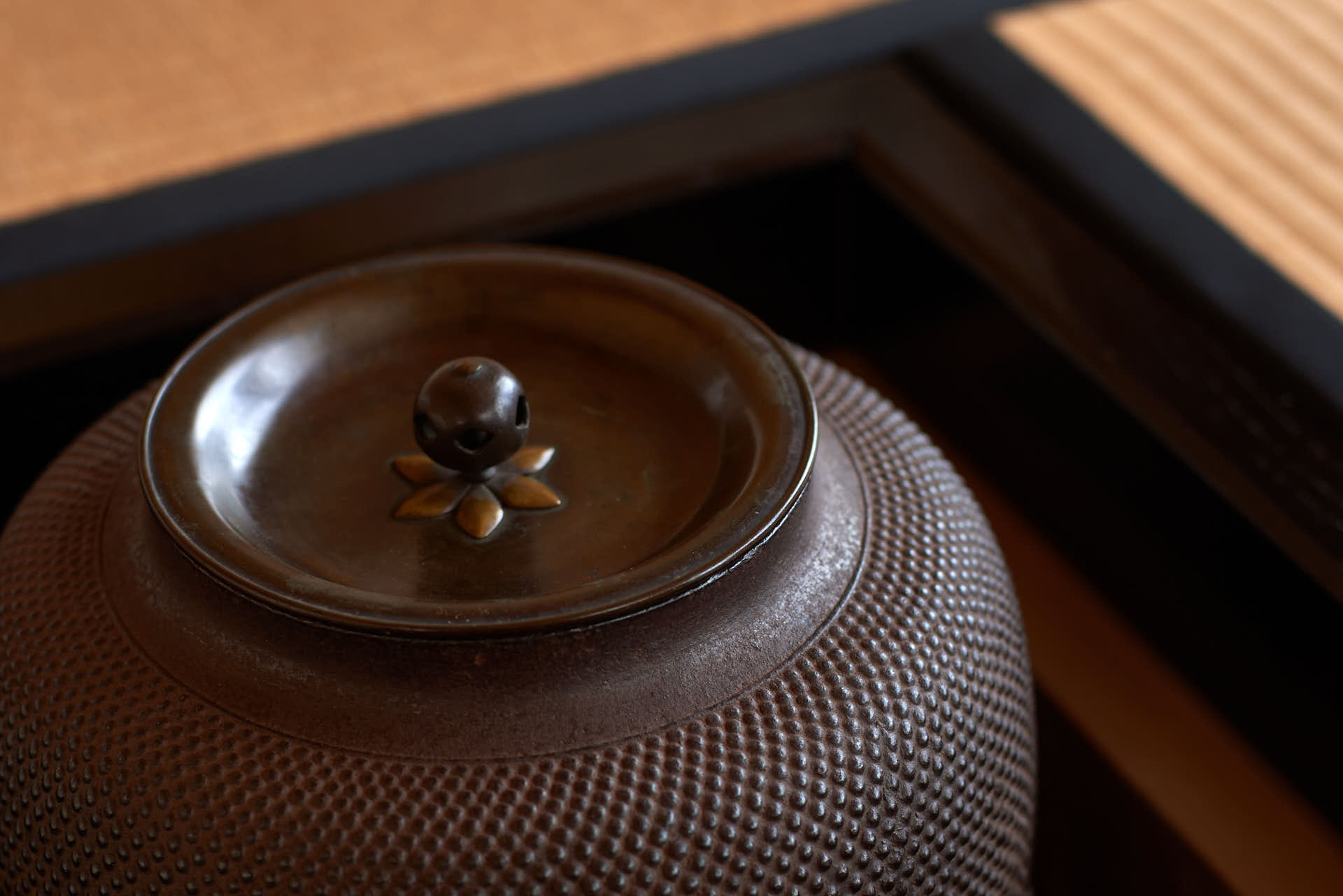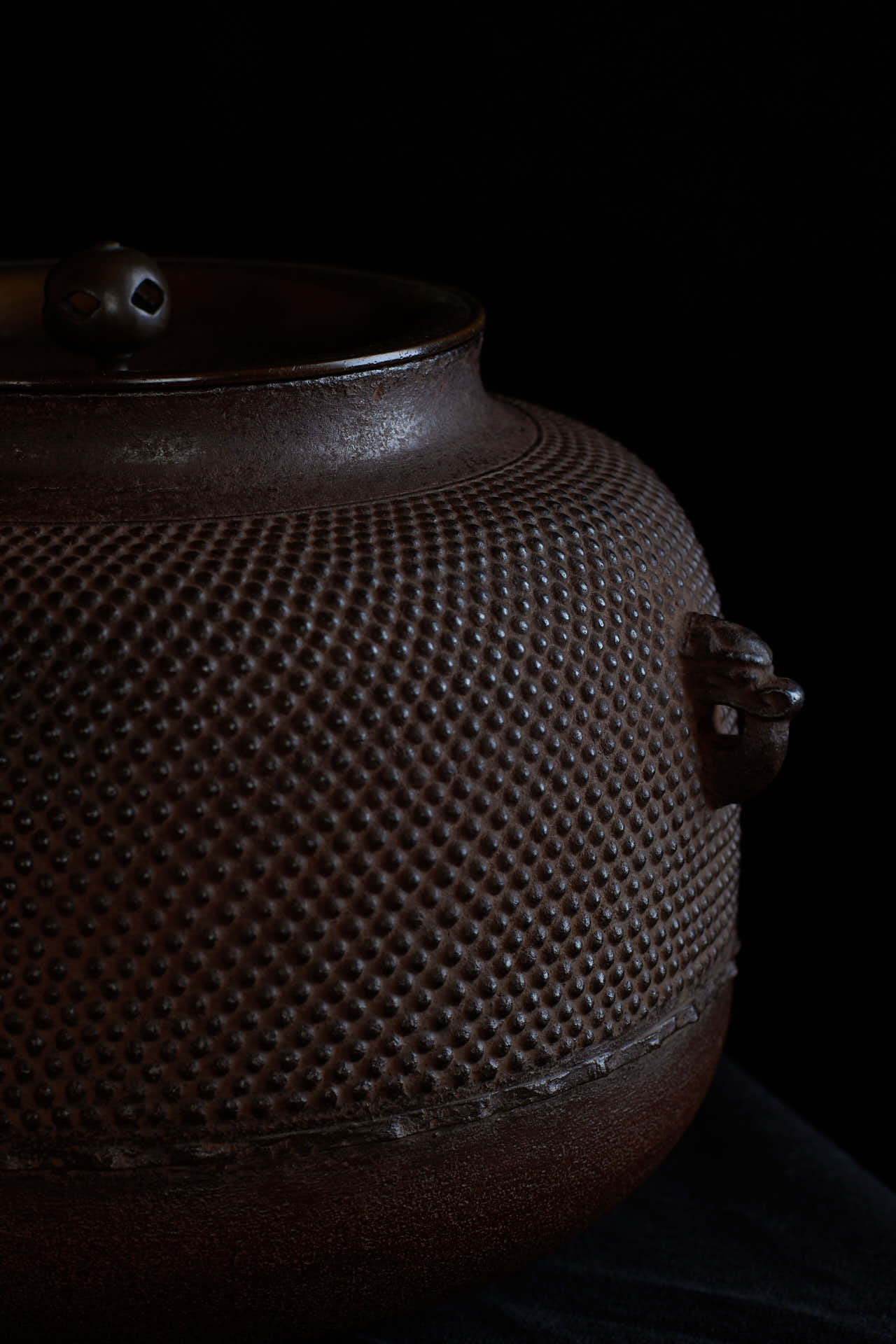The Arrival of Iron
Tea Culture: New Created from Old

Tea Culture: New Created from Old
A Protagonist of Tea Ceremony
A hint of charcoal fragrance fills the tranquil tearoom, accompanied only by the gentle bubbling of water in the kettle. Tea culture has paved the way for Japan’s adoption of coffee, and teakettles are the highlight of all iron equipment.
The Ashiya-style kettle has its origins in Ashiya, Fukuoka Prefecture, between the 14th and early 17th centuries. The town used to be a water transportation hub linked to Asia, which likely influenced the art of kettle-making. Its exquisite craftsmanship found favor with the aristocrats of Kyoto during the height of tea culture. Today, eight out of the nine kettles nationally designated as important cultural properties hail from Ashiya.

The style is marked by a well-balanced round shape, a smooth body adorned with graceful lines, and a thin 2 mm wall, rendering the kettle lightweight and easy to handle. A 14th-century masterpiece features a dainty and whimsical “hailstone pattern” texture, with tiny rounded bumps on the matte rust surface.
In Search of Lost Technology
The casting method has been lost for 400 years. Still, efforts are underway to revive it. The town has set up a workshop within the 1 ha grounds of Ashiyagama-no-Sato, or The Ashiya Kettle Park, complete with a Japanese garden and tearooms.
The only written record of the process was left behind by Ekiken Kaibara, a botanist and philosopher from the Edo period. His Journal of Chikuzen describes how artisans of that time created mold cores by applying soil and clay to a model on a rotating plate. The pull-and-paste method was akin to making a temple bell mold.

The need for more clues posed a considerable challenge to the specialist team. Casting engineers Takahiro Yatsuki and Yosuke Higuchi, along with curator Hidehiro Shingo, made a pilgrimage to all the remaining Ashiya kettles. They analyzed the techniques used and sought guidance from Akira Kahara, the chief manufacturer of Nittoho Tatara, the last traditional ironmaking workshop.
Honoring the pious tradition of ironworkers, they offered prayers to the deity of iron whenever they tried casting. After numerous setbacks, they finally succeeded in the faithful recreation of the legendary teaware, now coveted by high-end tea enthusiasts.
Without active preservation of knowledge, numerous techniques are at risk of fading into obscurity. The resurgence of the Ashiya style is an inspiration to all those involved in the iron-related industry.


